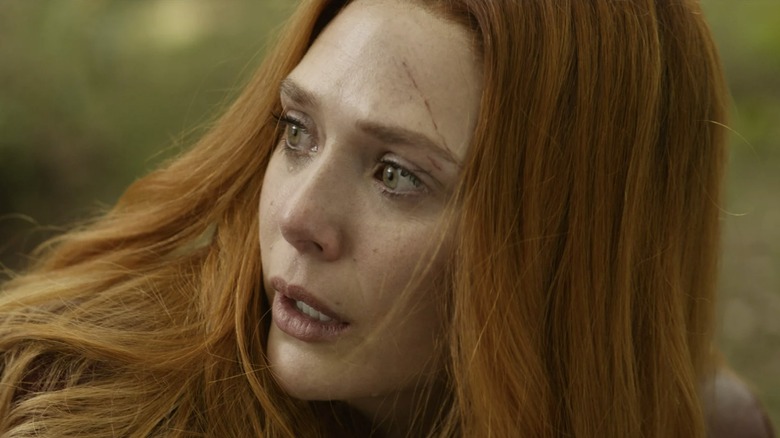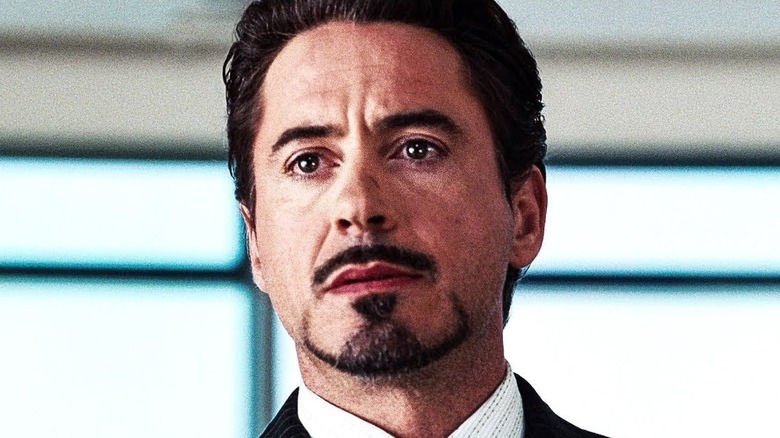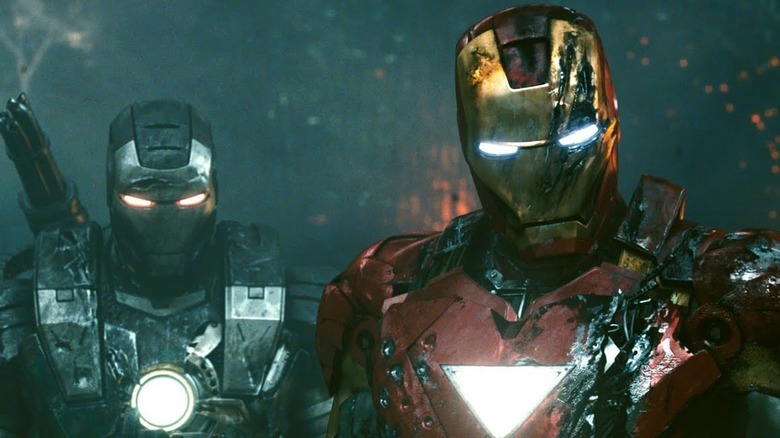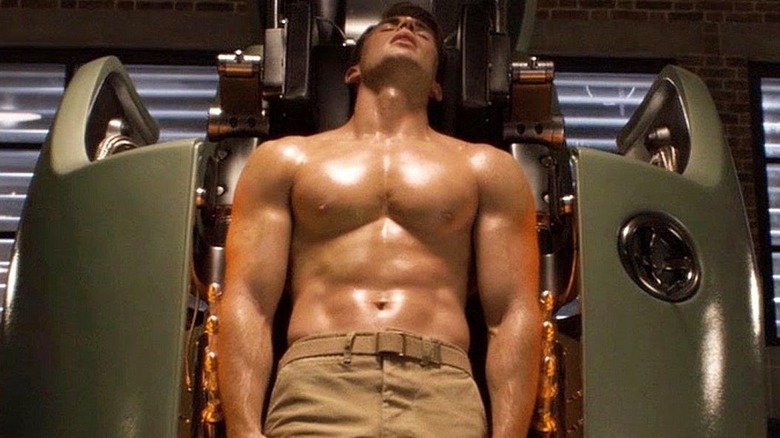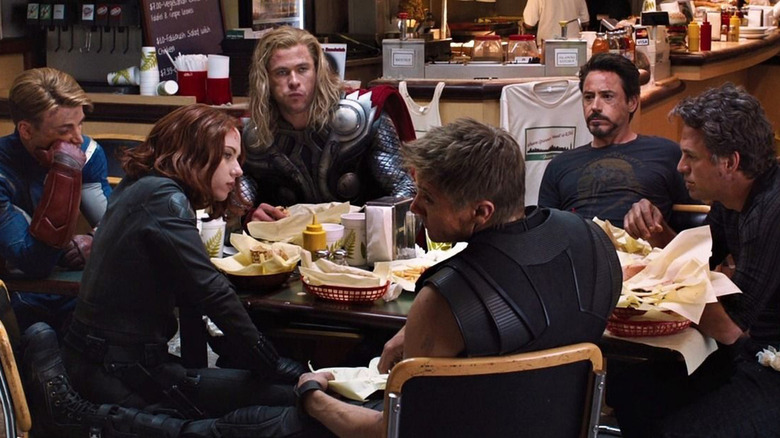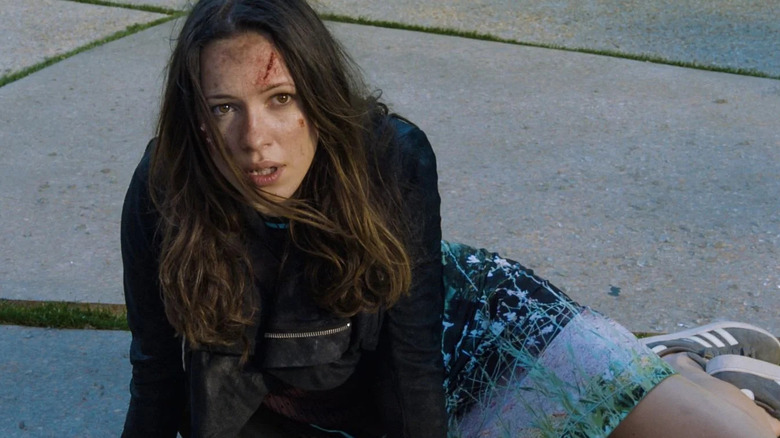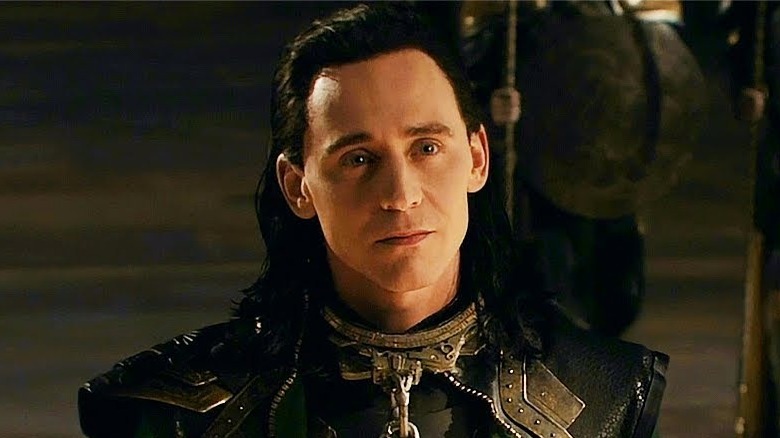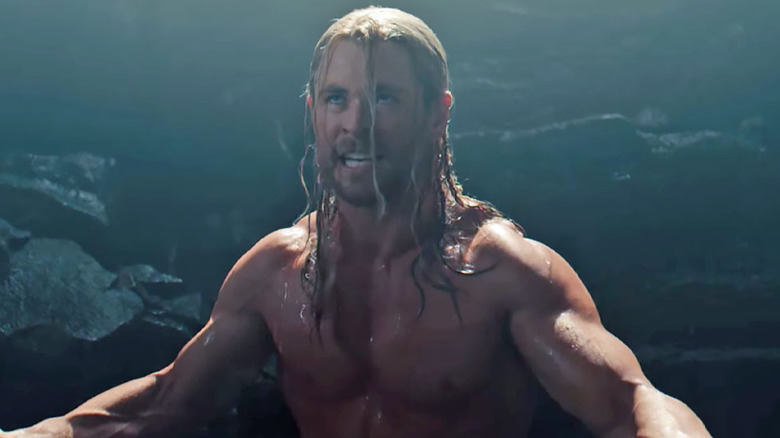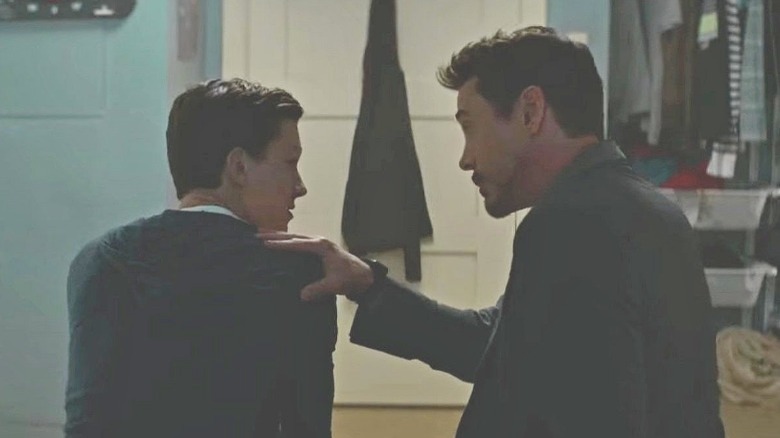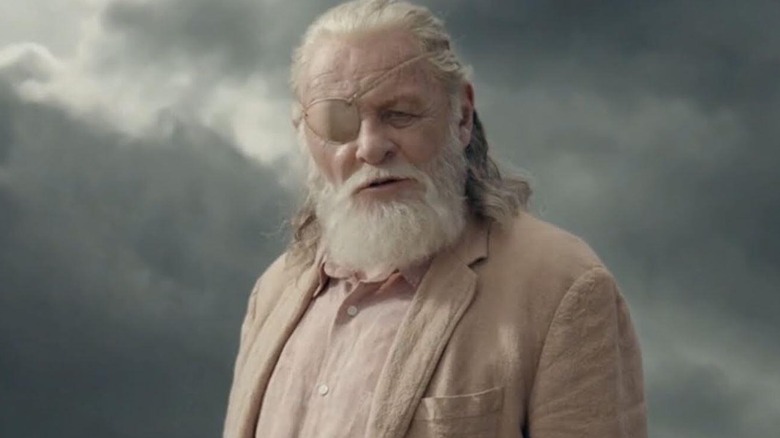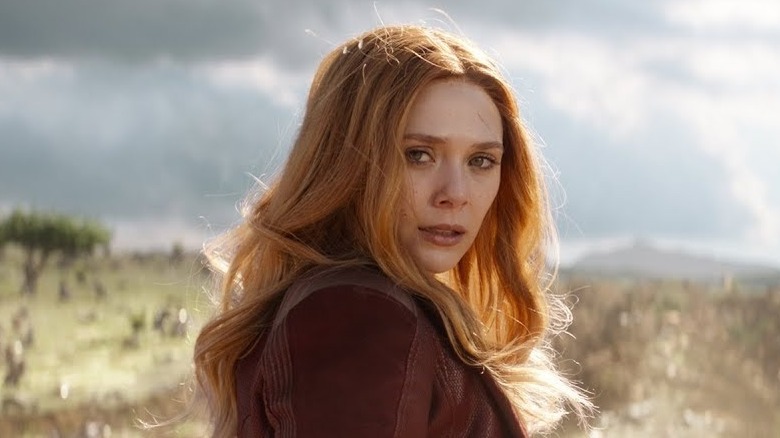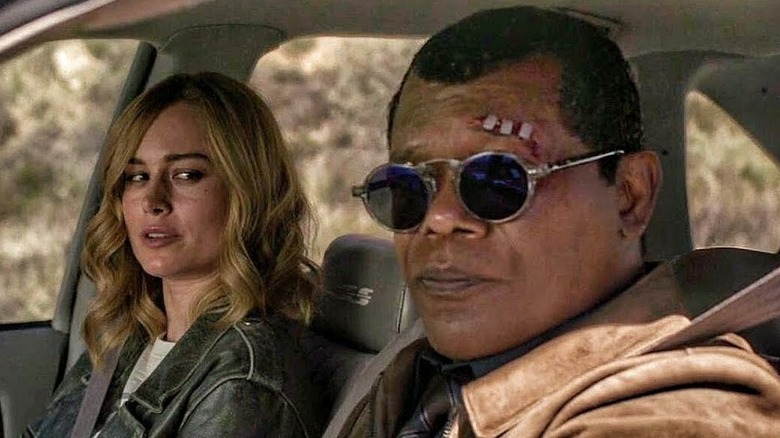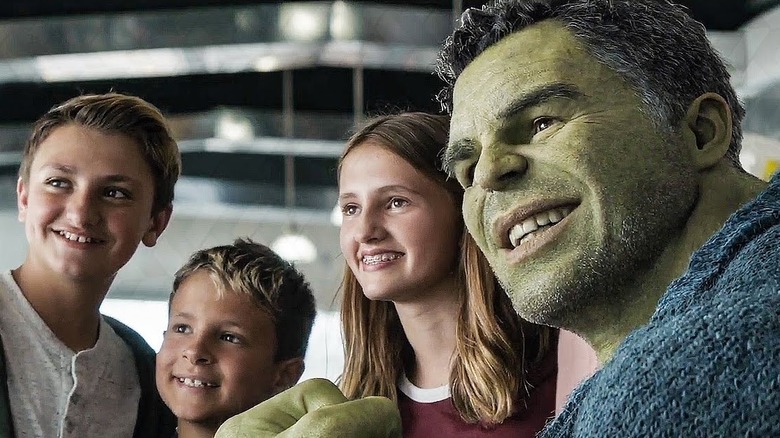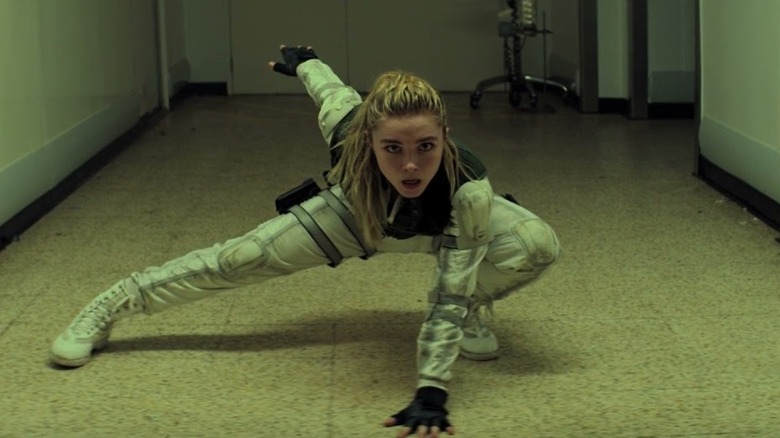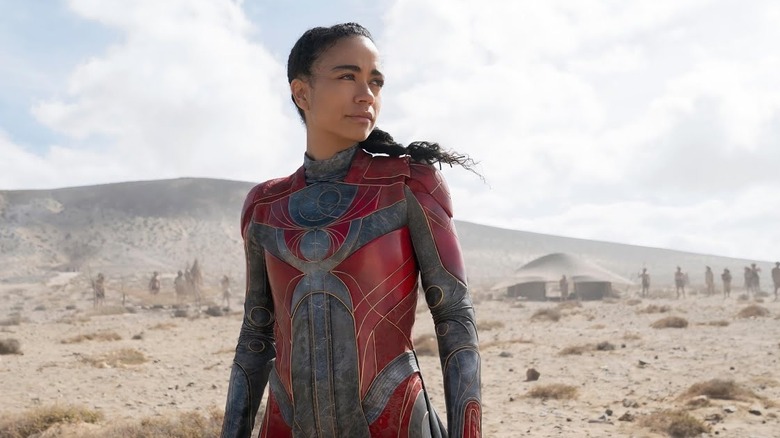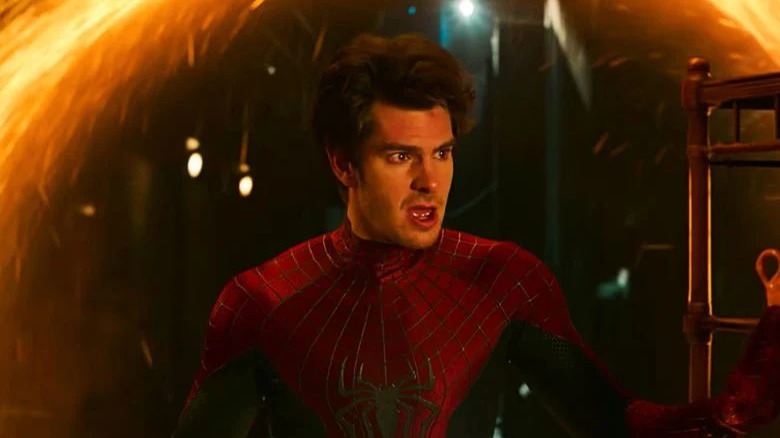MCU Scenes That Were Never Supposed To Happen
The Marvel Cinematic Universe is one of the most popular multimedia franchises in the world today, with enormously successful films ruling the global box office while a growing line of original programming expands on Disney+. However, as tightly planned as the production on these superhero movies may be, there are spur of the moment improvisations and changes during filming that make the final cut instead of certain scenes as they were originally intended by the filmmakers. As a natural, creative evolution during the filmmaking process, these mid-production alterations are present in every major MCU project to date.
Here are all the most notable unplanned MCU scenes that made it into their respective films, ranging from ad libbed dialog by the actors to rewritten and reshot sequences. Had many of these changes not been incorporated, the MCU could be far different than the version audiences have known and loved for over a decade.
Iron Man's closing line completely changed the film
Let's start with what is arguably the most well-known instance of an unplanned ad lib making the final cut and changing an entire MCU film. Tony Stark's defiant declaration to a shocked press conference at the end of 2008's "Iron Man" that he is indeed a superhero perfectly defines the character. Unable to help himself, Stark's unwavering hubris in face of certain consequence has him ditch a provided alibi to reveal his alter ego to the general public. The moment is so iconic, it was mirrored over a decade later in "Avengers: Endgame" as the character's last words before sacrificing himself to destroy Thanos and his extraterrestrial army.
The line was also a spur of the moment ad lib from Robert Downey, Jr. during filming. Marvel Studios president Kevin Feige confirmed that the line was not planned, with Stark originally scripted to stick with his S.H.I.E.L.D.-provided cover story to maintain a secret identity. Instead, the filmmakers liked the improvisation and felt it stayed in line with the character, leading to its memorable inclusion to close out the film and lay the foundation of the MCU.
Iron Man 2 almost featured a more revealing showdown
"Iron Man 2" is the first direct sequel in the MCU and showcases some of the early growing pains in the shared cinematic universe. One example is how wildly different the final showdown against the supervillain Whiplash is in the theatrical version compared to its original plans. In the theatrical cut, Iron Man and War Machine combine repulsor blasts to incapacitate Whiplash before the villain destroys both himself and his drone army, with the two heroes barely escaping in time.
In an alternate version of this climax, Whiplash instead decides to lure Stark into surrendering by holding Pepper Potts hostage with his electrified coils. Stark acquiesces with this demand, emerging from his Iron Man armor only for War Machine to destroy Whiplash after the villain drops his guard while Stark and Pepper escape. Filmmaker Jon Favreau told MTV News that he made the change during post-production to instill more action in the climax, with no additional filming taking place to accommodate the swap.
Captain America: The First Avenger gives Peggy Carter the ultimate instinctive reaction
"Captain America: The First Avenger" chronicles World War II enlistee Steve Rogers' transformation into a full-fledged super-soldier, turning the tide of the war. Steve's metamorphosis from a skinny kid from Brooklyn into a musclebound fighting machine is witnessed firsthand by Strategic Science Reserve operative Peggy Carter. When Steve emerges from the specially prepared chamber that triggers his body to dramatically change, Peggy can't help but instinctively touch his perfectly formed pectoral muscle.
Actor Hayley Atwell admitted to Esquire that the moment where Peggy reflexively touches Steve's chest was an improvised reaction she added to the scene with encouragement from director Joe Johnston, who retained the touch in the final film. Though brief, the interaction not only brings some levity to the transformation scene but helps further develop the blossoming romance that serves as the emotional backbone to Steve's MCU arc.
The Avengers' unplanned shawarma break
The MCU popularized the idea of including a scene following the end credits roll, sometimes setting up future films and sometimes providing a throwaway gag. "The Avengers," the first MCU film to feature both a mid and end credits sequence, decided to film its post-credits scene after the movie's premiere in 2012. Though the scene of the battered and bruised Avengers commiserating over shawarma is a fan favorite, it was added less than a month before its wide theatrical release.
After Downey, Jr. and filmmaker Joss Whedon filmed different quips for Tony Stark to make after the Battle of New York, an offhand line about shawarma stuck. Not only did the line stay in the movie, Whedon decided to expand on the line by making it the final, punctuative joke in the post-credits sequence. Given the all-star cast's hectic work schedules, the time that worked best to reconvene and film the quick sequence was immediately after the movie's premiere. In a logistical twist, Evans had grown out a beard before he attended the premiere, leading him to wear a facial prosthetic over it for the scene and masking it further by covering his jaw with his hand.
Iron Man 3 changed its major villains mid-production
"Iron Man 3" pitted Tony Stark against the sinister Mandarin, with Stark's tech industry rival Aldrich Killian revealed as the true villainous mastermind by the end of the film. Joining Killian is Stark's old paramour Maya Hansen, portrayed by Rebecca Hall, who is murdered by Killian after she becomes unnerved by the full scope of his plot. However, Hansen was intended to survive much longer into "Iron Man 3" as a much more committed antagonist in the film's story.
Filmmaker Shane Black recalled to Uproxx that Hansen was intended to be a major villain, but this was nixed by executives who felt tie-in merchandise for the character wouldn't sell as well. Black was quick to clarify that the executive in question wasn't Marvel Studios head Kevin Feige, but an unspecified corporate figure from Marvel Entertainment. Hall elaborated to EW that her character was supposed to survive to the end of "Iron Man 3," having a change of heart and sacrificing herself to help save the day (via Collider) instead of being unceremoniously killed much earlier.
Thor: The Dark World nearly killed off Loki permanently
Tom Hiddleston's portrayal of Loki was one of the early breakout performances in the MCU but, following "The Avengers," the trickster had to answer for his crimes. This plot thread was followed up in "Thor: The Dark World," with Loki imprisoned within the dungeons of Asgard only to be freed by Thor to help him against the Dark Elf Malekith. This desperate alliance took the two brothers to the Dark Elf realm of Svartalfheim, where Loki was apparently killed, only to quietly reveal he faked his death and replaced Odin on the Asgardian throne.
This ruse wasn't always planned for the trickster god, with Loki's death in "The Dark World" initially intended to be permanent. While the emotional death scene, where the mortally wounded Loki bids farewell to Thor, was written as a definitive end, Hiddleston told Rotten Tomatoes that test audiences were unconvinced that the Norse bad boy was actually gone for good. This led to reshoots during the movie's post-production process that included a sequence where Odin leaves Asgard to visit Svartalfheim offscreen, along with a final twist revealing the switch.
Avengers: Age of Ultron's cave scene spurred a creative clash
While not without its own merits, "Avengers: Age of Ultron" is a muddled film that has endured a divisive response from fans since premiering in 2015. One of the odder scenes in the movie has Thor and his friend Erik Selvig visit a remote cave where the Asgardian Avenger receives a vision about the Infinity Stones. This scene did not play out as Whedon originally envisioned and led to a creative clash with the studio executives for its altered inclusion in the final cut.
Originally, the scene involved Thor communing with the Norns, the Norse rough equivalent to the personification of fate. Entering the water, Thor would temporarily be possessed by the Norns and provide vital information to Selvig that Thor would then relay back to the Avengers. With test audiences confused by the scene and the movie's rough cut running long, Whedon was instructed by executives to trim the cave sequence into something more tenable. Initially saying he'd cut the cave scene altogether, Whedon relented when the executives threatened to pull the farmhouse sequence introducing Hawkeye's family if the cave was omitted entirely.
Iron Man's impromptu advice for Spider-Man in Captain America: Civil War
After years of backroom negotiations between Marvel Studios and Sony, Spider-Man finally made his MCU debut in 2016's "Captain America: Civil War." Needing to bolster his faction with some reinforcements to bring Captain America and his splinter team in, Tony Stark personally visits Peter Parker and recruits him to join the Avengers. This results in a conversation between the two heroes in Peter's bedroom, as Stark reveals he knows Peter's superhero secret while awkwardly bringing him under his wing as a protégé.
Towards the end of their conversation, before jetting back for the fight against Captain America and his allies in Germany, Stark instructs Peter to move over so he can sit next to him. In the "Civil War" directors' and screenwriters' commentary included with the home video release, co-director Anthony Russo recalls this offhand line was unscripted. With co-star Tom Holland forgetting the blocking of the scene, Downey stayed in character to remind him to move so he could properly be positioned in the frame. The dialogue stayed in the final film.
Thor: Ragnarok reshot Odin's final fate
For all the absurdist humor throughout "Thor: Ragnarok," there is a surprising amount of heart as Thor tries to stop his evil sister Hela from conquering Asgard. One of the more emotional scenes in the film has Thor and Loki witness their father Odin dying in Norway, with the All-Father imparting final words of wisdom to his sons. While Odin was always intended to die in "Ragnarok," his demise was originally planned to be far less dignified.
A deleted scene placed Odin's death in a back alley in Manhattan shortly after Thor and Loki's meeting with Doctor Strange, with Odin more shoddily dressed. Rather than Odin dying naturally, Hela arrives on the scene and murders her father before destroying Mjolnir. This darker alternate scene was replaced by the Norwegian setting as filmmaker Taika Waititi told Digital Spy (via Cinemablend) that he felt Odin also being in New York was "too convenient," changing the location for something more peaceful.
Avengers: Infinity War originally spared another Avenger
One of the most shocking moments in recent cinematic history is the ending to 2018's "Avengers: Infinity War," as Thanos bests the Avengers and completes his murderous plot. After defeating the Avengers, Thanos uses the fully powered Infinity Gauntlet to wipe out half of all sentient life in the galaxy with a snap of his fingers. Among the heroes suddenly perishing in a cloud of dust immediately after the infamous snap is Scarlet Witch, with Wanda Maximoff dying as she clutches the lifeless body of her lover, Vision.
While Thanos' victory in "Infinity War" was always something of a certainty, Wanda's dusty death was something that was added during the production with the character originally intended to survive the snap. "Infinity War" screenwriter Christopher Markus revealed a previous draft of the script placed Wanda among those spared after the snap and going on to play a role in "Avengers: Endgame." However, the writers felt the character wouldn't have as much to do in "Endgame" after playing such a major role in "Infinity War," and decided to kill her off instead.
Captain Marvel included a hilarious Samuel L. Jackson improv
With its 1990s setting, "Captain Marvel" delves into a relatively unexplored period of the MCU, showing the early days of S.H.I.E.L.D. veterans Nick Fury and Phil Coulson. This includes a relatively lighter demeanor for Fury, before the toll of heading the intelligence agency led to a wearier, more cynical worldview. An early example of Fury's cheekier side in the film has him arrive at an autopsy for a deceased Skrull infiltrator, impulsively taking a peek under the sheet to view the extraterrestrial's genitalia.
The quick scene is one of the more hilarious moments in "Captain Marvel” and was completely unplanned by filmmakers Anna Boden and Ryan Fleck. In their commentary track for the film included with its home video release, the two directors admit the peek was improvised by Samuel L. Jackson. With Boden and Fleck rightfully feeling that the improvisation was "pretty funny," Jackson's impromptu action was kept in the final film.
Hulk's entrance in Avengers: Endgame was a late addition
"Avengers: Endgame" features a five-year gap after Thanos' murderous snap, with the surviving heroes reassembling after developing a plan to travel through time and resurrect the fallen. In the ensuing break, Bruce Banner and the Hulk have set aside their differences and merged together to form an individual possessing Hulk's strength and Banner's intellect. Captain America and his friends approach the merged Hulk in a diner, surprised at Banner's new status quo as they recruit him onto their team.
In the filmmakers' commentary included with the "Endgame" home video release, the Russo brothers reveal that the diner scene was added during reshoots for the film. The merged Hulk was originally planned to be introduced during the climax of "Infinity War," bursting from the Hulkbuster armor to defeat Cull Obsidian after Banner and his alter ego successfully compromised. With the filmmakers deciding that the sequence didn't fit in tonally with the battle (via Cinemablend), the merged Hulk was saved for "Endgame," with the diner scene filmed to accommodate this delayed introduction.
Black Widow's best joke was from an offhand observation
"Black Widow" introduced Natasha Romanoff's long-lost adopted family, including her younger sister, Yelena Belova, who was similarly trained to become a lethal superspy. Like all siblings, Yelena can poke fun and criticize her sister in ways that no one else would dare do to Natasha. Shortly after they reunite, the most cutting observation Yelena makes is about Natasha's repeated pose as Black Widow, gracefully extending her arm and leg as she lands on a single knee.
In an interview with MTV News promoting the film, actor Florence Pugh revealed that Yelena's jab to Natasha about her posing was added by screenwriter Eric Pearson after overhearing a conversation between Pugh and Johansson. In a break during stunt rehearsal on set, Pugh learned from the stunt performers that Black Widow's usual pose is actually a relatively unsafe action move. As Pugh expressed surprise about the inefficacy of the move, Pearson decided to add the throwaway line for Yelena in the film.
Eternals' flirtatious dynamic surprised its director
The Eternals are virtual demigods in the Marvel Universe, living among humanity for millennia while rooting out any monstrous Deviants menacing the planet. This prolonged coexistence has led the Eternals to develop their own sense of humanity, including a flirty dynamic between the speedster Makkari and telepathic Druig. According to "Eternals" filmmaker Chloé Zhao, the close relationship between the two cosmic heroes was something added to the movie based on the natural chemistry between its co-stars.
In a press conference promoting "Eternals," Zhao recalled (via Insider) that while observing actors Lauren Ridloff and Barry Keoghan meeting for the first time, she noticed an immediate rapport between them. As the two actors immediately began improvising, Zhao decided to lean into this engaging dynamic and added more scenes between the two characters exploring their flirtation. Ridloff herself elaborated that she felt Makkari and Druig shared several traits and would connect deeper with each other than some of their fellow Eternals, fueling the relationship.
Spider-Man: No Way Home incorporates Andrew Garfield's tips
Easily the most thrilling aspect of "Spider-Man: No Way Home" was the opportunity to see both Tobey Maguire and Andrew Garfield suit up as Spider-Man again and help their MCU counterpart, portrayed by Tom Holland. As the three webslingers trade stories about their respective experiences, the brotherly bond between the heroes is immediately noticeable. One Peter Parker particularly caught up in the moment is Garfield's wallcrawler, expressing his love for his fellow Spider-Men amidst all the chaos.
Garfield's Peter taking a moment to tell his multiversal counterparts that he loves them during the climactic battle was (via Variety) an improvised bit of dialogue kept in the final film. One of the other suggestions by Garfield that made it into "No Way Home" is the lab scene with all three Peters pointing at each other when called upon by Ned Leeds. Speaking on the "Happy Sad Confused" podcast (via The Direct), Garfield recommended the inclusion of the pointing to reenact the similar Spider-Man meme, with director Jon Watts quickly agreeing and filming the scene.
